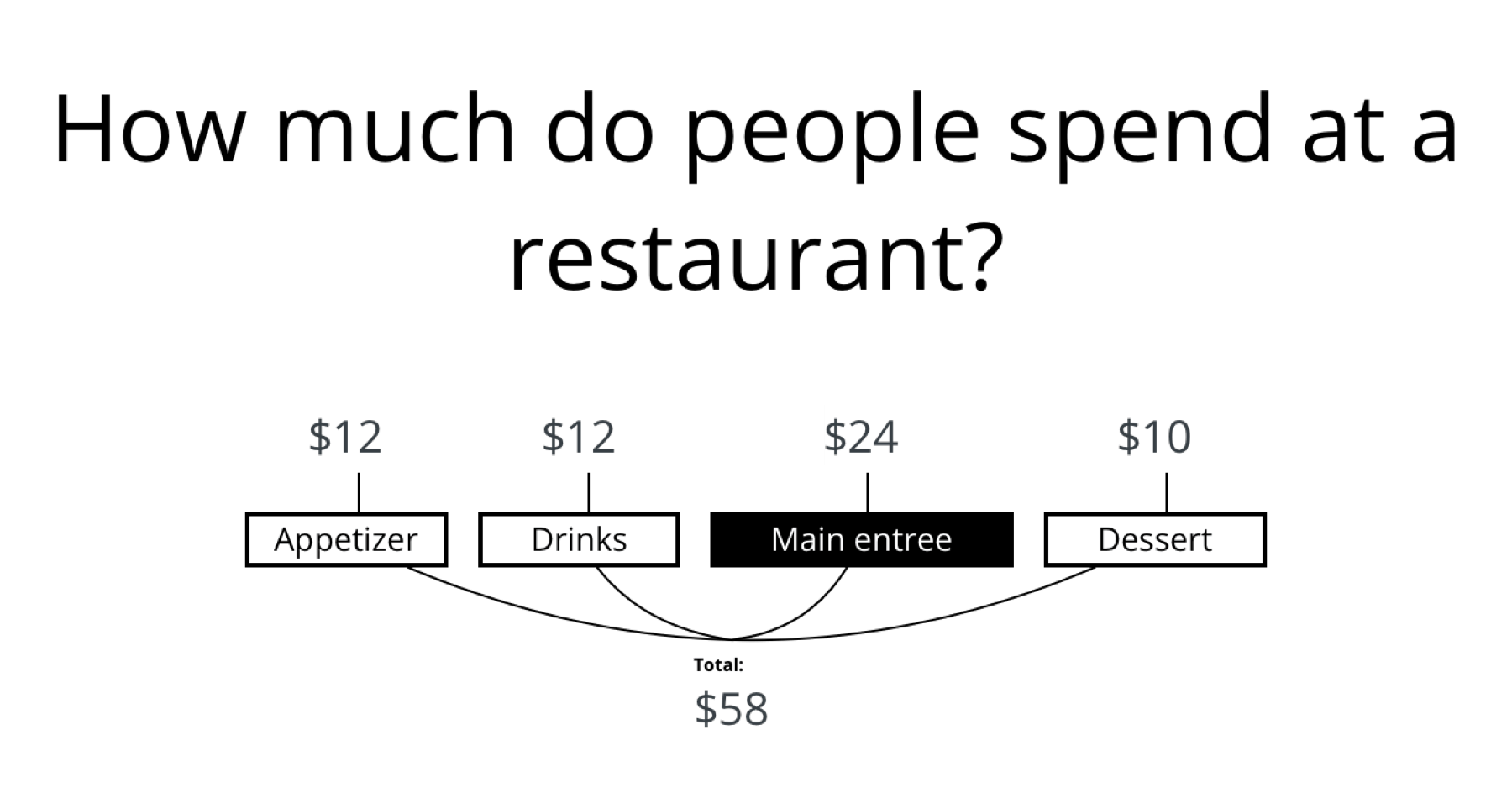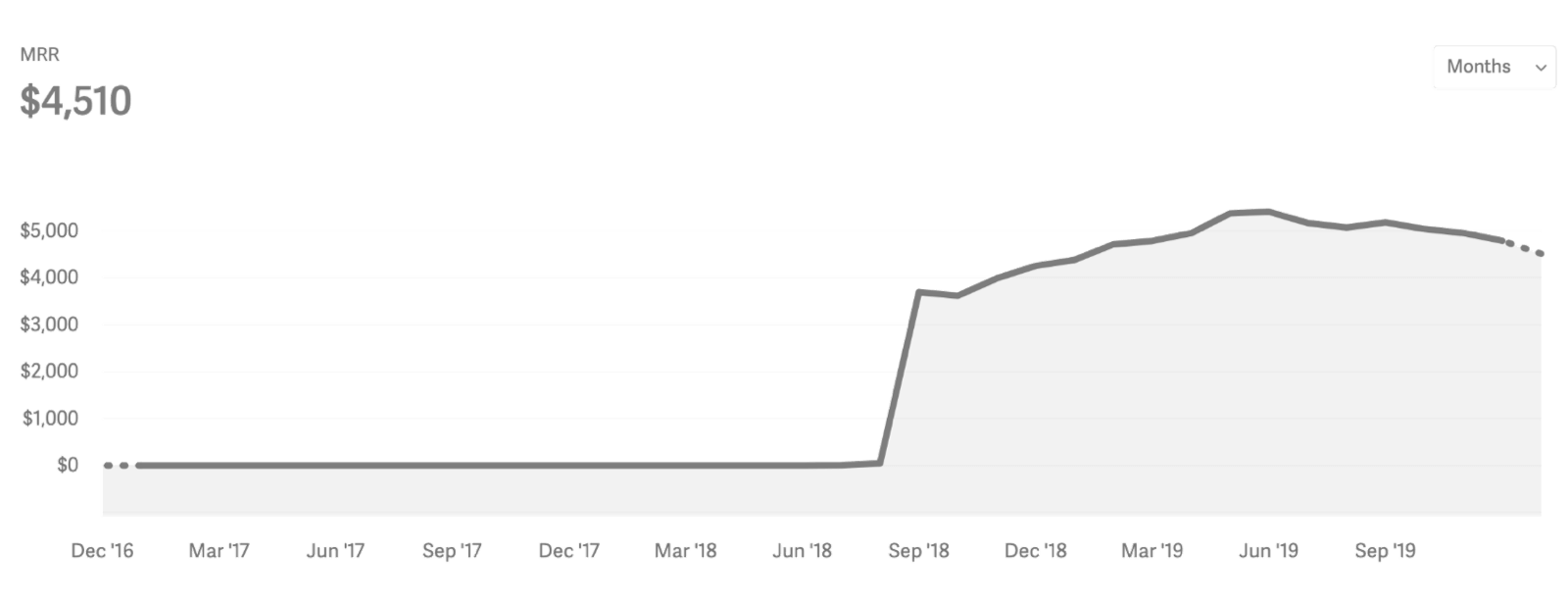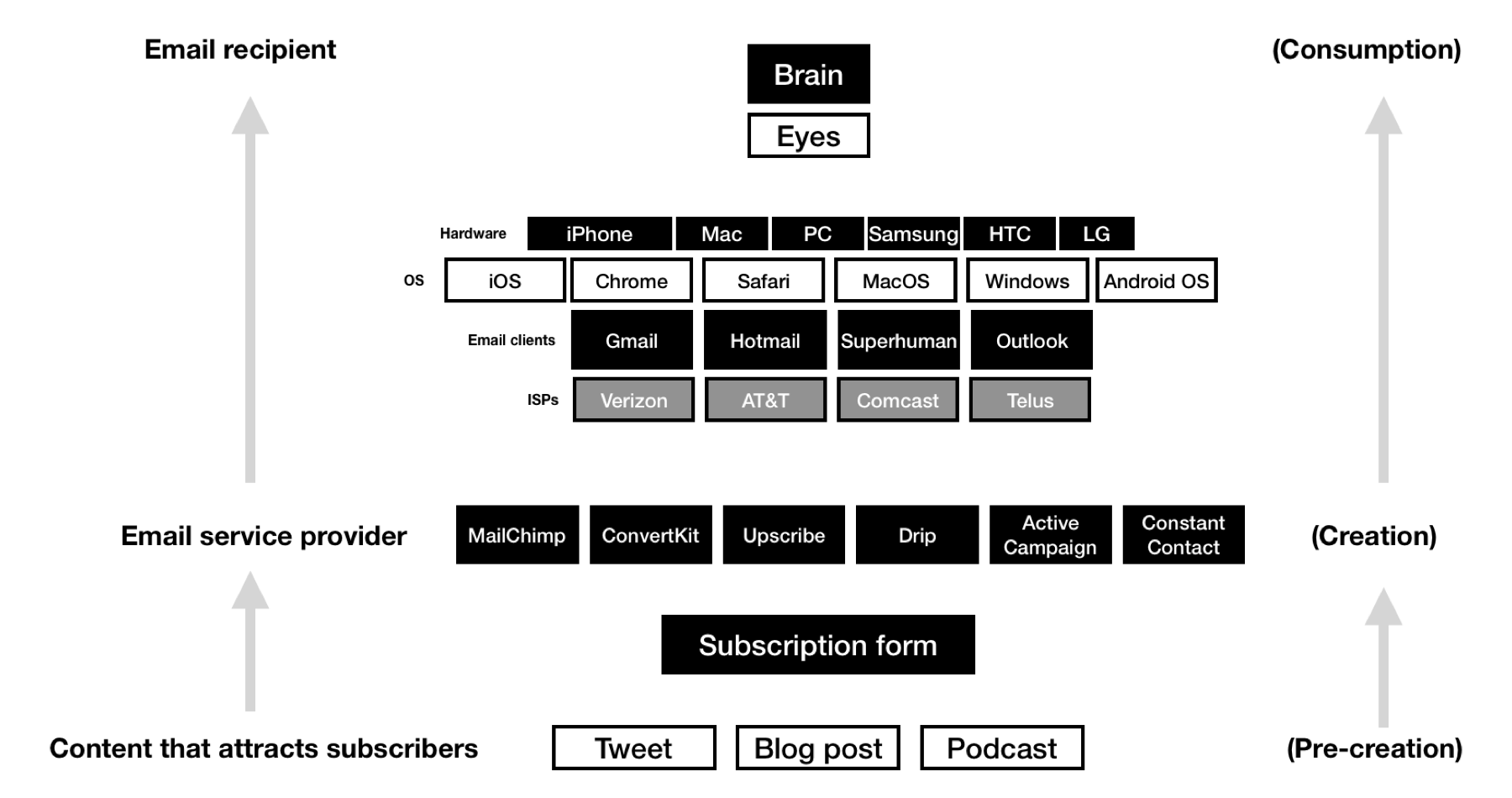The main thing
At a restaurant, some folks order appetizers and some will even get dessert.
But everyone orders the entree.
If you have $60 to spend on dinner, it's likely going to break down something like this:
Appetizer – $12
Drinks – $12
Entree – $24
Dessert – $10
Only have $48 in your pocket? You'll likely skip the appetizer.
Too full at the end of the meal? You'll decline dessert.
Plan on ordering just one thing? You'll probably just order the entree.
The entree is the main dish; it's the star of the show. And for restaurants, the entree is important because it's where they make most of their money.
"Most of the time the profit contribution “margin” will be greater on the main dish." – William H. Bender, Foodservice Consultant
Why is this important for bootstrappers?
Many markets have a “main product” that consume most of the value in a category.
How certain products earn more revenue than others
First, let's say you want to sell a product online. What types of services would you need to buy?
My guess is most online businesses spend money on:
a website
email marketing
and their online store
This is an important point in itself: these three categories are the "main things." It's no wonder that companies like Squarespace (website), MailChimp (email marketing), and Shopify (online store) are doing so well: they're offering necessities that every business needs.
Ok, now let's zoom into the email marketing piece. In this category, which players get most of the value?
In this example, if you're going to pay for just one thing, it's probably going to be MailChimp. You could get nicer landing pages if you use Lead Pages, but for the online retailer, that's likely more of an appetizer. You could get more in-depth stats if you use Litmus Analytics, but that's more of dessert. MailChimp is the entree.
Case study: Upscribe
Now, let's look at the evolution of my friend Josh Anderton's product, Upscribe.
His initial offering was "newsletter subscribe forms for Medium." He got some initial traction with that but soon hit a revenue ceiling. Revenue stalled at $5,500.
He tried lots of things to increase revenue: he hired someone to help him with marketing and added new features (like the ability to embed forms on regular websites). But nothing worked. Soon, churn started affecting revenue: in seven months, he lost $1,000 (nearly 19%) of his MRR.
The problem? His service was ancillary to the main dish. In his category, folks care more about creating and sending the emails; the forms are secondary.
Recently, he's added the ability to create and send email newsletters from Upscribe. Instead of offering a "nice-to-have" application, he's trying to move Upscribe into the "must-have" category.
Will he be able to compete with MailChimp and ConvertKit? There are no guarantees! But, with the right execution, he might be able to carve out a piece of the market for himself. ConvertKit (which launched in 2013), only has 0.34% market share (vs MailChimp’s 60.51%), but does $1.6 million in MRR!
Should you build an entree or an appetizer?
There are two things to keep in mind:
There are a few product categories that every business needs (website, accounting, email, payment processing.
Within those categories, certain sections of the value chain get most of the revenue.
If you're building a bootstrapped software product, you'll want to target:
product categories where customers are already actively spending money,
the sections of the value chain that get a sufficient percentage of overall revenue.
This could mean focusing on your category's "main thing." However, there are a few notable exceptions.
In some product categories (email inbox), the “main thing” is so big (Gmail), that you can build an ancillary add-on and do well. The Clearbit add-on for Gmail proves this.
Steve Jobs infamously lambasted Dropbox for being a "feature, not a product." However, the file-synchronization market turned out to be huge (Dropbox reportedly had more than 500 million users in 2016).
It's the size and momentum of a given category that will determine whether an add-on product can be profitable.
Other examples of big categories that have room for ancillary products:
E-commerce – this category is so big you can build a great business (like Carthook) even if you're not providing the main thing (Shopify).
Mac / PC utilities – if you're one of the 2 billion people using a personal computer, you'll likely need to buy additional utilities from time to time. These add-ons supplement the operating system.
Audio, video, image editing – these markets are large on their own, but are also predisposed towards plugins. If you're editing in Adobe Creative Suite (15 million users), buying some additional brushes or textures makes sense.
However, you should be wary: in many categories, the market’s just not big enough to create that level of demand. Everyone orders the entree, but not enough people order dessert.
Mapping the value chain
Nathan Baschez, of Divinations, recommends mapping the value chain of your particular category. You outline all of the steps from creation to consumption.
Here's an example I made for the email newsletter category:
The value map is divided into three categories: pre-creation, creation, and consumption.
Pre-creation
There's a bunch of stuff that needs to happen before you create an email newsletter:
To attract subscribers, you'll need content (blog, Tweets, podcast)
You'll also need subscription forms (so people can enter their email)
And you'll need a secure place to store all of those subscribers' email addresses
Creation
Once you have subscribers, you can write and send your email newsletter. This is the where you're using a tool like ConvertKit, MailChimp, or Upscribe.
Of course, once you click "send" your emails have to go through a bunch more infrastructure (ISPs, operating systems) before it reaches the recipient.
Consumption
Eventually, your email lands in a recipient's email inbox on one of their devices (PC, tablet, or phone) and they're able to read it.
How to spot opportunities in the value chain
Looking at the above example, we can evaluate a product category for opportunities. We can see which stages of the value chain:
are B2C vs B2B,
better for bootstrappers,
get most of the subscription revenue.
Sometimes, people spend most of their money on the "creation" activity; other times it's hosting and delivery activities that get most of the revenue.
It's interesting to observe which parts of the chain our society values and devalues. For example, in the website market, the software that allows you to do the writing, editing and publishing (WordPress) is worth nothing. People don't pay for the CMS, they pay for the hosting.
Nathan and I discussed this in more detail here:
So, which should you target? The entree, the appetizer, or the dessert?
Most of this depends on how big the overall market is; bigger markets can better support ancillary products.
For example, in Portland, there's a dessert restaurant called Salt & Straw. They regularly feature 36 flavors of ice cream that they make themselves. This works in Portland because, well, it's Portland! It's a large, growing city that attracts 26.6 million tourists every year.
However, if I tried that same concept in Falkland, BC (a town of 600 people) it likely wouldn't work. Falkland simply isn't big enough to support an artisanal ice cream shop. Do you know what does work in Falkland? The Rock Eatery: a restaurant that focuses on hearty entrees.
I hope this is helpful,
Justin Jackson
@mijustin



